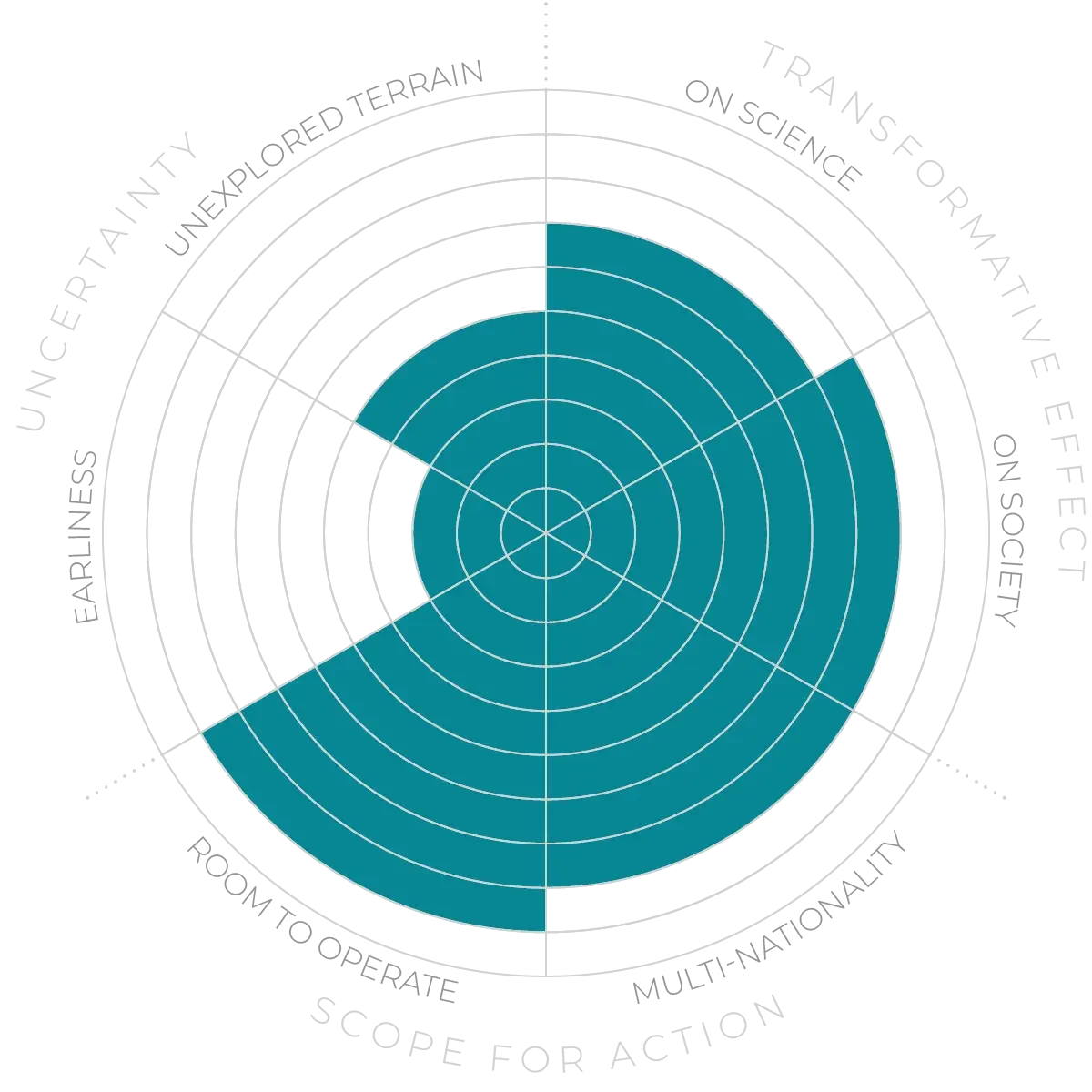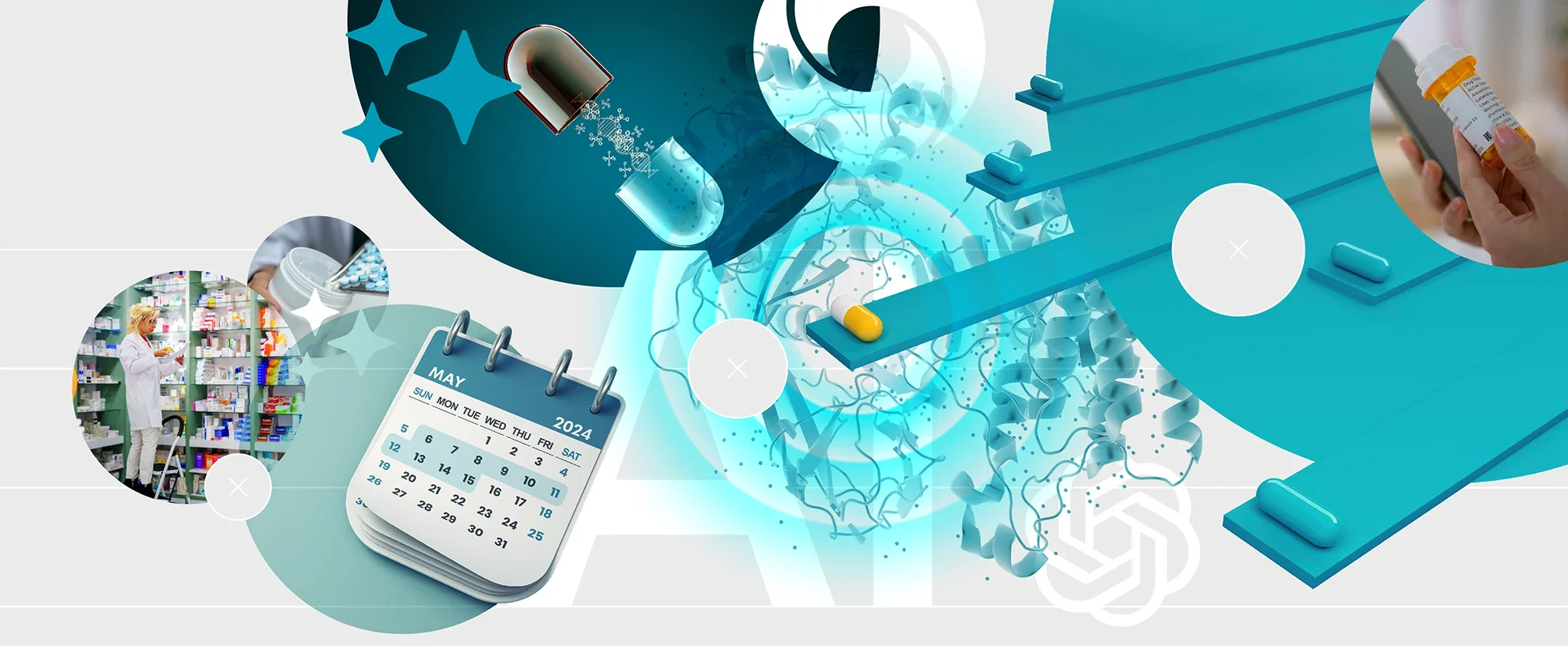Finding new small-molecule drugs is a multibillion-dollar, multi-year effort that often fails.30 AI-based drug development promises a faster, more effective path and has yielded novel drugs, some of which are now entering trials.31 It is poised to become an increasingly valuable tool.
Future Horizons:
10-yearhorizon
New frameworks around AI
Larger data sources are planned at the nation-state level. AI clinical-trial data mining links targets to diseases where no links had previously been identified. Frameworks and new chemical-synthesis systems are put in place to more quickly and robustly turn AI discoveries into compounds.
25-yearhorizon
AI is a reliable drug-discovery partner
AI-mined trial data has now identified disease targets as intervenable nodes and generated proteins and small molecules to intervene. Drug-discovery time is shortened to days instead of years. Sequencing and synthesis is automated, reducing costs such that rare-disease drug treatments become viable.
First, machine learning can identify the complicated lock-and-key relationships between new compounds and the relevant disease-related proteins they may affect. AI systems like Google DeepMind’s AlphaFold, which can predict a protein's 3D structure from its sequence, are teaming up with major pharmaceutical companies to hasten the discovery of small-molecule therapeutics.32 AI also holds promise for synthesising new chemical compounds not seen in nature which bacteria therefore have not had a chance to build defences against.33
Second, AI can mine the metagenome — the diversity of all existing natural molecules34 — and beyond; one project is mining the genetic information of all available extinct organisms, from extinct human relatives such as Neanderthals to ice-age animals like the woolly mammoth and giant sloth. These have identified previously employed defence mechanisms, now extinct, that contemporary pathogens have not evolved to evade.35
Third, machine learning can be deployed to find patterns in other complex datasets, for example in the heaps of data generated during clinical trials, whether they succeed or fail.
But AI and machine learning are not magic tools and are useless without good data. Data generation requires well-curated and standardised public datasets, and functionalising AI also requires next-generation manufacturing and regulatory approaches to bring synthesis into line with discovery.
Drug discovery - Anticipation Scores
The Anticipation Potential of a research field is determined by the capacity for impactful action in the present, considering possible future transformative breakthroughs in a field over a 25-year outlook. A field with a high Anticipation Potential, therefore, combines the potential range of future transformative possibilities engendered by a research area with a wide field of opportunities for action in the present. We asked researchers in the field to anticipate:
- The uncertainty related to future science breakthroughs in the field
- The transformative effect anticipated breakthroughs may have on research and society
- The scope for action in the present in relation to anticipated breakthroughs.
This chart represents a summary of their responses to each of these elements, which when combined, provide the Anticipation Potential for the topic. See methodology for more information.



